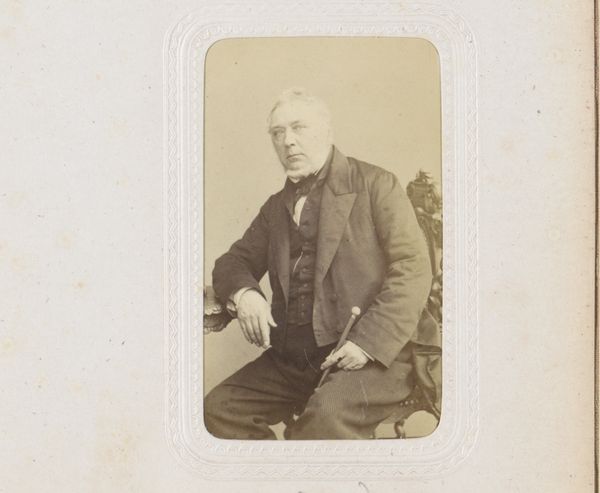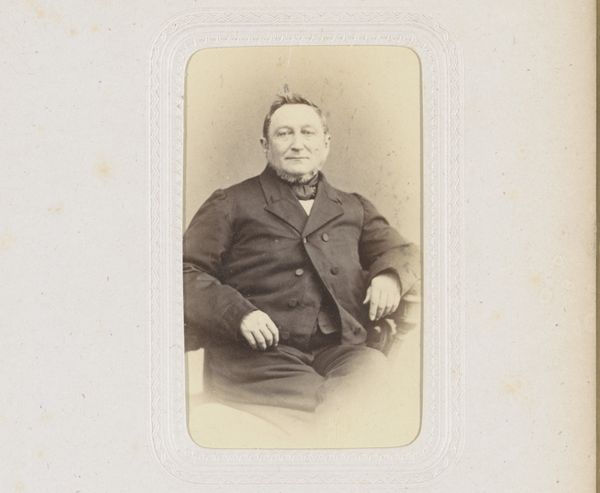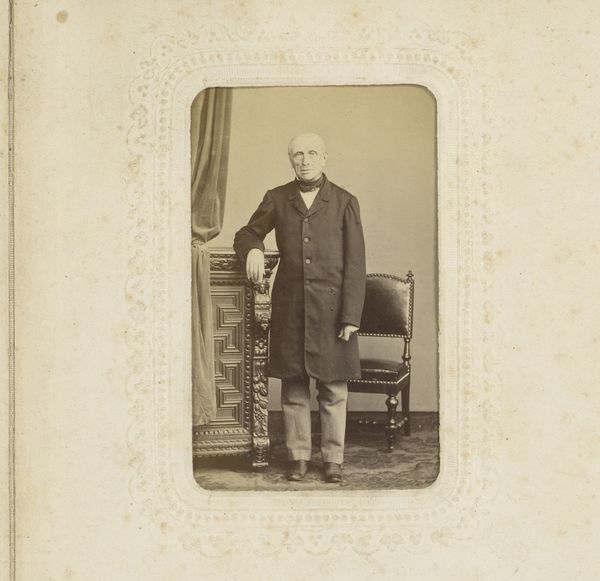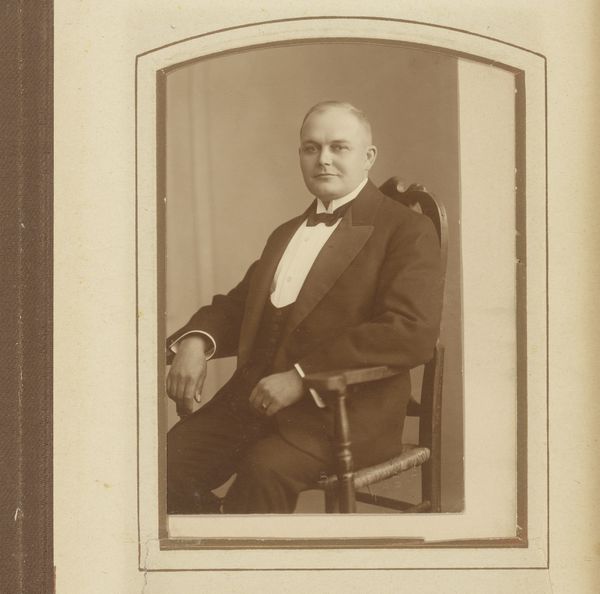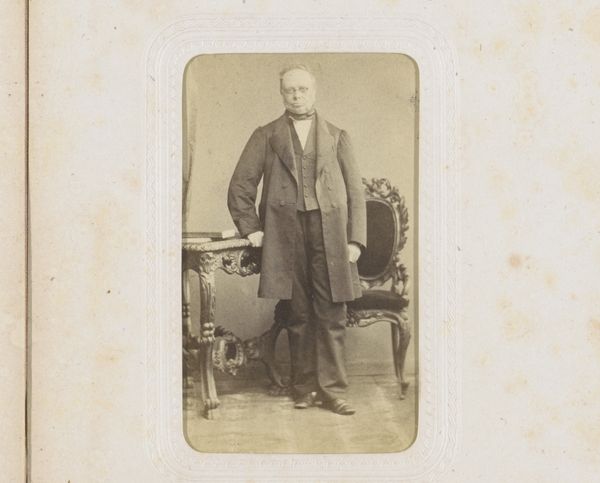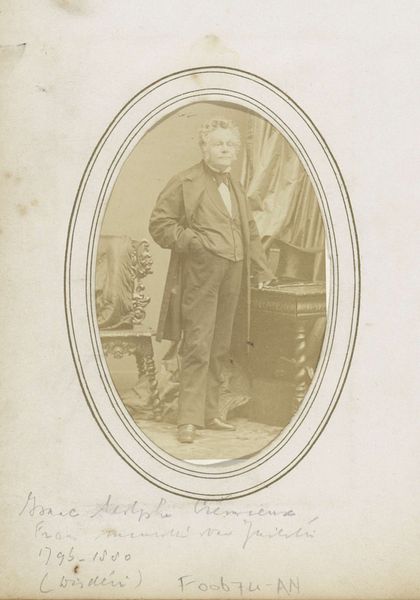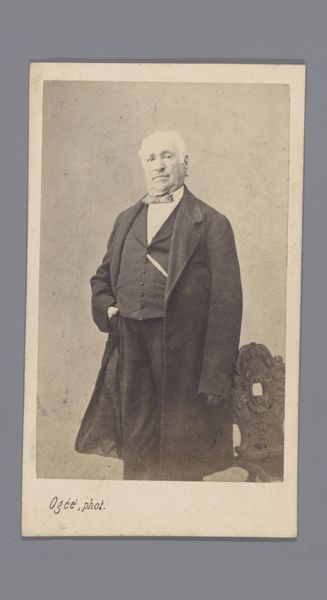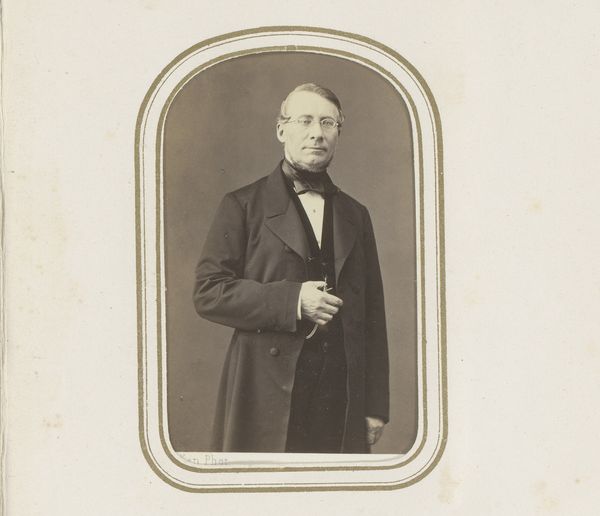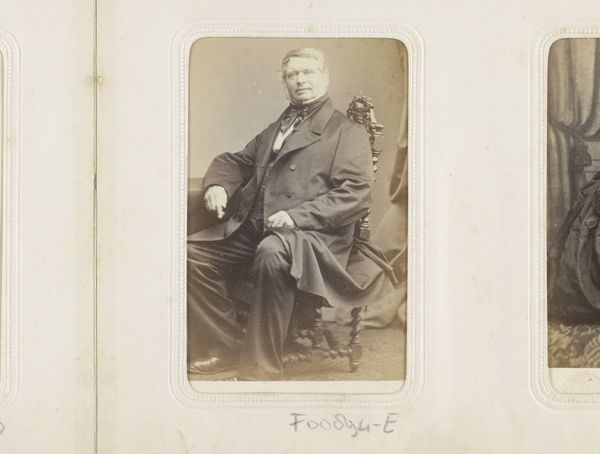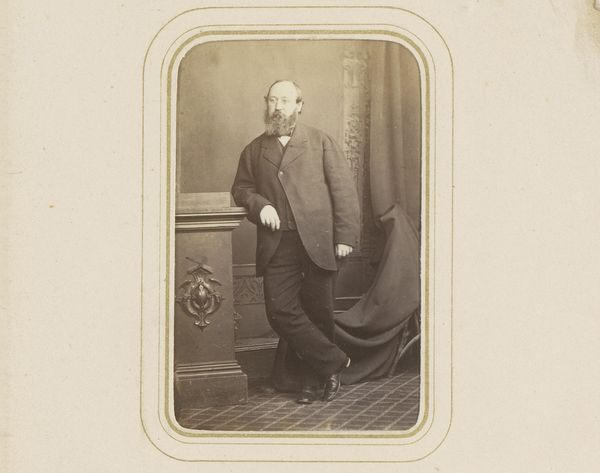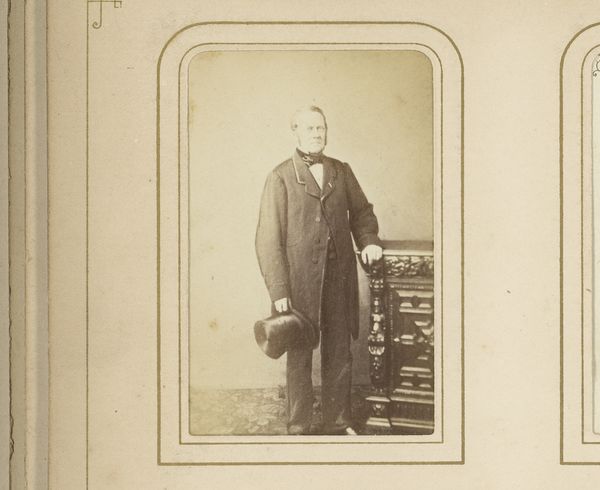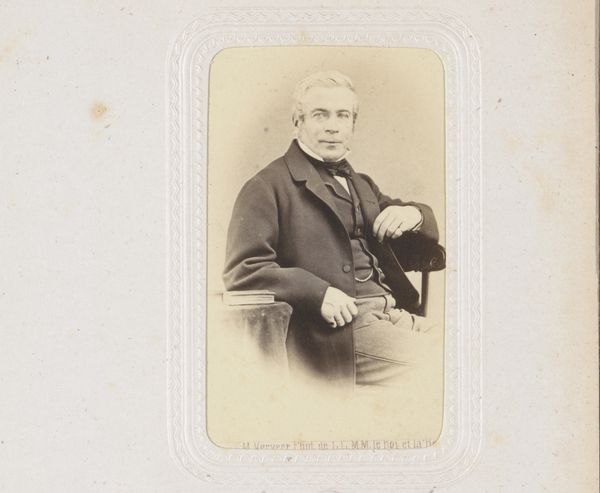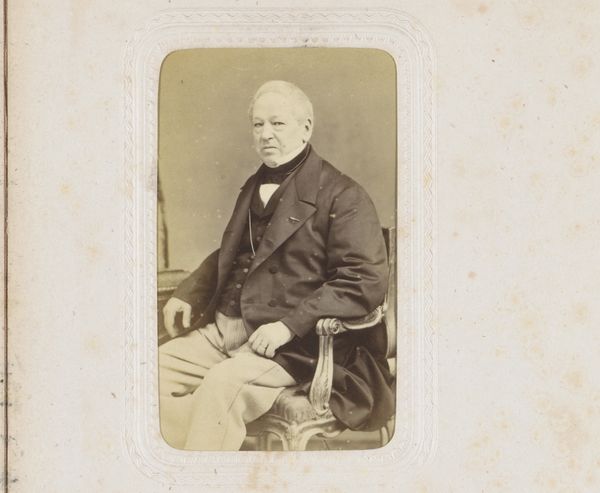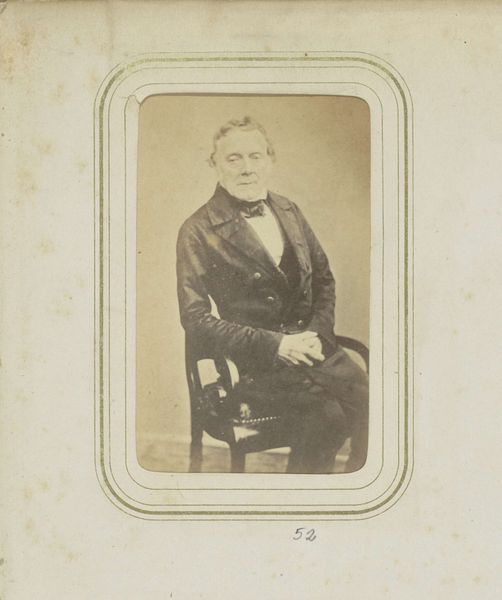
photography
#
portrait
#
16_19th-century
#
photography
#
historical photography
#
19th century
#
genre-painting
#
realism
Dimensions: height 83 mm, width 51 mm
Copyright: Rijks Museum: Open Domain
Editor: This photograph, titled "Portret van een zittende man," created sometime between 1857 and 1864 by Wegner & Mottu, immediately strikes me as quite formal and austere. The man’s pose and expression contribute to this feeling. How do you interpret this portrait through a formalist lens? Curator: The composition adheres to a classical structure: a stable, seated figure framed within a rectangle. Notice how the light delicately sculpts the sitter’s face, emphasizing the lines and planes, particularly around the brow and cheekbones. Consider, too, the textures: the smooth, almost reflective quality of the paper versus the implied texture of the man's clothing and the ornate chair. Do you observe how these contrasts affect your reading of the subject? Editor: Yes, the starkness of the background and the tight framing really bring the man and his attire into sharp focus, almost exaggerating the textures. What's the impact of such a sharp rendering? Curator: The clarity lends an almost hyper-real quality. It strips away extraneous detail and foregrounds the essential forms and tones. This allows us to contemplate the relationships between light and shadow, shape and form, almost independently of the subject matter itself. It emphasizes the artifice inherent in photographic representation even while striving for mimetic accuracy. Does the limited tonal range also affect how you read the piece? Editor: Absolutely, the restricted palette adds to the feeling of constraint and severity. Considering the technical limitations of early photography, does that change your analysis at all? Curator: Not fundamentally. While appreciating the technical challenges is valuable, a formalist analysis focuses on the choices made within those constraints, exploring how the artist manipulated available means to create specific effects. Even "limitations" become elements contributing to the final composition. What do you make of the interplay of shapes -- the rectangles within rectangles formed by the frame and composition? Editor: It really directs your eye, layering the importance of the figure while further encapsulating him within the composition, highlighting confinement. I see now that by considering formal elements we uncover subtle nuances that shape meaning. Curator: Precisely. The objective qualities and the construction within a frame. It reveals the carefully constructed artifice behind what might initially seem like a straightforward representation.
Comments
No comments
Be the first to comment and join the conversation on the ultimate creative platform.
